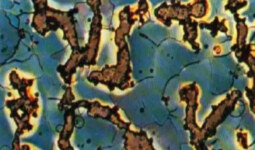What problems should the machining center pay attention to when processing composite materials?
In the processing of these composite materials, we have to process them according to the types of composite materials.
Here is a brief introduction to some of the problems that the machining center should pay attention to when processing composite materials
1. Types of composite materials for machining centers
Composite materials are divided into metal and metal composite materials, non-metal and metal composite materials, and non-metal and non-metal composite materials according to their composition. According to its structural characteristics, it is divided into
- 1. Fiber composite materials. It is composited by placing various fiber reinforcements in the matrix material. Such as fiber reinforced plastics, fiber reinforced metals, etc.
- 2, sandwich composite material. It is composed of different surface materials and core materials. Usually the face material is high and thin; the core material is light and low in strength, but has a certain rigidity and thickness. There are two types: solid sandwich and honeycomb sandwich.
- 3. Fine-grained composite materials. Distribute hard fine particles evenly in the matrix, such as dispersion strengthened alloys, cermets, etc.
- 4. Hybrid composite materials. It is composed of two or more reinforcing phase materials mixed in one matrix phase material. Compared with ordinary single-reinforced phase composite materials, its impact strength, fatigue strength and fracture toughness are significantly improved, and it has special thermal expansion properties. It is divided into intra-layer hybrid, inter-layer hybrid, sandwich hybrid, intra-layer/inter-layer hybrid and super-hybrid composite materials.
Two, some problems that should be paid attention to when processing composite materials by machining centers
- 1. Carbon fiber composite material has low interlayer strength and is easy to produce delamination under the action of cutting force. Therefore, the axial force should be reduced when drilling or trimming. Drilling requires high speed and small feed. The speed of the machining center is generally 3000~6000r/min, and the feed rate is 0.01~0.04mm/r. It is better to use three-pointed and two-edged or two-pointed and two-edged drills. The tip can cut off the carbon fiber layer first, and the two blades repair the hole wall. The diamond-inlaid drill has excellent sharpness and wear resistance. The drilling of composite material and titanium alloy sandwich is a difficult problem. Generally, solid carbide drills are used to drill according to the cutting parameters of drilling titanium alloys. The titanium alloy side is drilled first, until the drilling is through, and lubricants are added during drilling. Relieve burns from composite materials. Boeing has specially developed a PCD combination drill bit for interlayer drilling.
- 2. The cutting effect of the 3 types of new solid carbide composite milling cutters is better. They all have some common characteristics: high rigidity, small helix angle, even 0°, and the specially designed herringbone blade can effectively reduce The axial cutting force of the small machining center reduces delamination, and its machining efficiency and effect are very good.
- 3. The composite material chips are powdery, which is harmful to human health. High-power vacuum cleaners should be used to vacuum. Water cooling can also effectively reduce dust pollution.
- 4. Carbon fiber composite material components are generally large in size, complex in shape and structure, and high in hardness and strength. They are difficult to process materials. During the cutting process, the cutting force is relatively large, and the cutting heat is not easily transmitted. In severe cases, the resin will be burnt or softened, and the tool wear will be serious. Therefore, the tool is the key to carbon fiber processing. The cutting mechanism is closer to grinding than milling. , The linear cutting speed of the machining center is usually greater than 500m/min, and the strategy of high speed and small feed is adopted. Edge trimming tools generally use solid carbide knurled milling cutters, electroplated diamond particle grinding wheels, diamond-inlaid milling cutters, and copper-based diamond particle saw blades.




